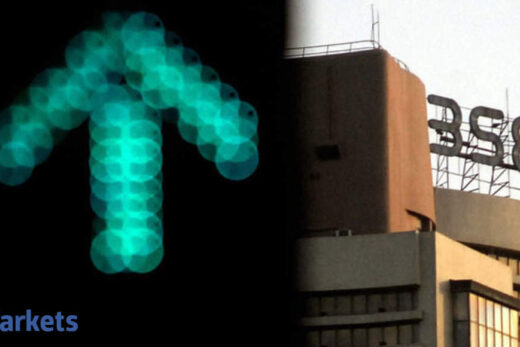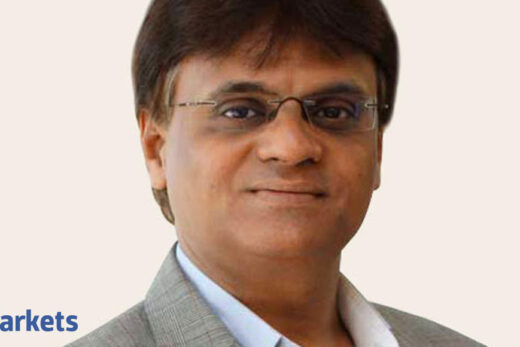India’s maiden effort in construction and operationalising a 508-km high speed railway corridor connecting Ahmedabad in the capital of the Prime Minister’s home state of Gujarat with the country’s financial capital, Mumbai, in Maharashtra stands in stark contrast to the clinical precision with which the Chinese have executed their mammoth infrastructure projects.
The construction was expected to begin in April 2020 with December 2023 as its initial completion date, which has now been pushed to December 2028, as only 23 per cent of 156 km of land has been acquired in Maharashtra as against 95 per cent of 348 km in Gujarat and 100 per cent of 4 km in Dadra and Nagar Haveli.
A closer look at the history of this marquee project of national importance will throw light on some of the key reasons for the delays and impediments.
The project was originally conceived in 2009-10 under the Congress-led UPA government as the 650-km Pune-Ahmedabad high speed railway corridor via Mumbai but the Pune-Mumbai leg was dropped in March 2013 under the UPA government by advancing specious reasoning of financial constraints.
A project that should have been a beacon of Prime Minister Narendra Modi’s cherished principle of cooperative federalism has ended up being badly embroiled as a centre-state dispute with simmering discontent among the citizens of Maharashtra. Both in the 2014 and 2019 Lok Sabha elections, 11.4 crore citizens of Maharashtra reposed their unflinching faith in the dynamic leadership and progressive, development-oriented policies of the Prime Minister by returning unprecedented mandates. A strong belief that the central government would espouse projects that would expedite rapid economic progress underpinned these mandates.
It is a proven fact that a large transportation infrastructure project has a significant multiplier impact on the economic activities of the region that it connects. Maharashtra’s citizens were confident that the originally proposed Pune-Ahmedabad bullet train project via Mumbai would usher in an era of rapid economic growth in the region surrounding Pune which is the cultural, educational, automobile, engineering and software capital of Maharashtra.
Of the total project cost of Rs 1.1 lakh crore, the Japan International Cooperation Agency (JICA) has agreed to provide 80% (Rs 88,000 crore) as a 50-year term loan at a meagre 0.1 per cent interest rate and a moratorium on repayments for 15 years. The remaining 20 per cent would be infused as equity contribution with 10 per cent (Rs 11,000 crore) being contributed by the Centre and 5 per cent each (Rs 5,500 crore) by the states of Maharashtra and Gujarat. The government of Maharashtra had initially readily agreed to provide its share of equity for the project.
The Centre was insistent that a large, prime piece of land in Mumbai’s financial hub of Bandra-Kurla Complex (BKC) be allotted for constructing a terminus in Mumbai. The previous Maharashtra government led by the BJP and its allies, and those in the Opposition were strongly opposed to this as Maharashtra was intending to build the International Financial Services Hub at that very spot. Not only would this hub have catapulted Mumbai as one of the top global financial centers but would also have yielded the state thousands of crores in revenue over the years. There is wide-spread belief that the previous State government had cravenly given-in to the immense pressure from the Centre and compromised the interests of its citizens by not being able to convince the Centre to opt for another alternative plot for the terminus in Mumbai and include more cities from Maharashtra like Pune and Nashik in the proposed route.
Citizens of Maharashtra are happy that their brethren from the neighboring State of Gujarat would derive enormous trade & economic benefits as a result of connectivity of key cities of Ahmedabad, Vadodara, Anand, Bharuch, Surat, Valsad and Vapi with the Urbs Prima in Indis (Mumbai). Besides providing efficient & quick connectivity for the approximate 19% citizens of Gujarati origin staying in the vibrant Mumbai Metropolitan Region (MMR) with their ancestral State; the bullet train would act as a force multiplier for trade & economic activities in Gujarat especially for the Gujarat International Finance Tec-City (GIFT City) at Ahmedabad, textile & diamond behemoth of Surat that is building India’s largest Diamond hub (Diamond Research & Mercantile city or DREAM), chemical & pharmaceutical industries in Vapi & Vadodara etc.
The legitimate question being posed by the citizens of Maharashtra who are contributing an equal amount of equity capital as Gujarat and parting with a prime parcel of land that would have been its International Financial Centre is whether the Centre is not committing grave injustice by scrapping the Pune to Mumbai leg of the proposed original route & not including the emerging industrial hub of Nashik by building a short spur on the route. Nashik holds the distinction of being one of the four holiest-of-holy places that hosts the sacred Kumbh; is one of India’s leading agro-processing hubs particularly for onions & grapes (Wine manufacturing capital of India), has many key defense establishments at Deolali and Ozar like HAL’s plane manufacturing township and is home to a vibrant engineering & automobile cluster of industries.
Reports of Nashik and Pune being part of future bullet train projects connecting Mumbai to Nagpur and Mumbai to Hyderabad respectively are widely perceived to be red herring intended to placate the rising discontent among the State’s citizens and kicking the can to distant and uncertain future. No wonder there is mounting opposition in the State for facilitating acquisition of land for a project whose costs far outweigh the benefits for the citizens of the State. Resource crunch due to once-in-a-century pandemic has put additional pressure on the State’s coffers to optimize its costs.
This simmering discontent and disenchantment can easily be addressed if the Honourable Prime Minister intervenes personally and upholds the principle of Cooperative Federalism by including the cities of Pune and Nashik in the route and directing the implementing agency to consider any suitable alternate plot for development of terminus allowing the State to develop its International Financial Centre. This singular intervention would go a long way in allaying unfounded apprehensions gaining ground about grave injustice being meted out to Maharashtra and its citizens and reduce ‘trust deficit’. It would help in creating conducive environment for the State government to convince its citizens to part with their land for a project that would benefit them. It would be a fitting example of adherence by the Centre to the precept of Sabka Saath, Sabka Vikas and Sabka Vishwas.
(Ajay Bodke is a politico-economic analyst. Views are his own)



